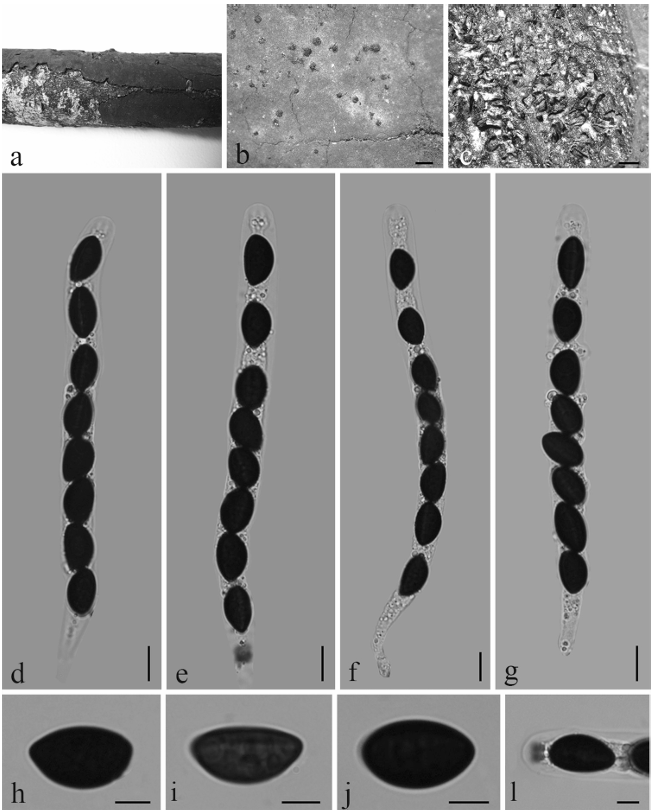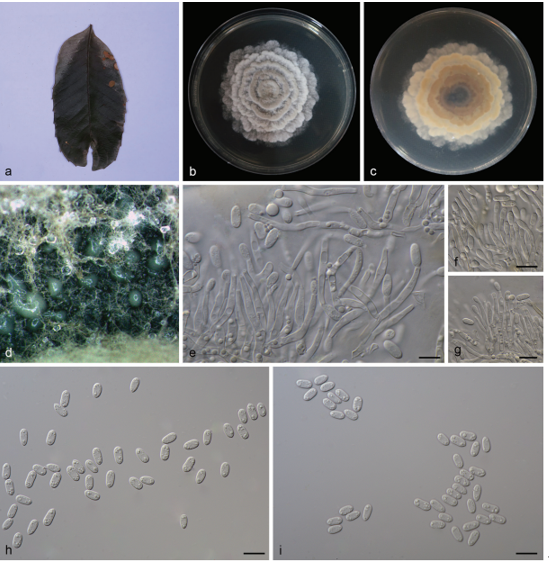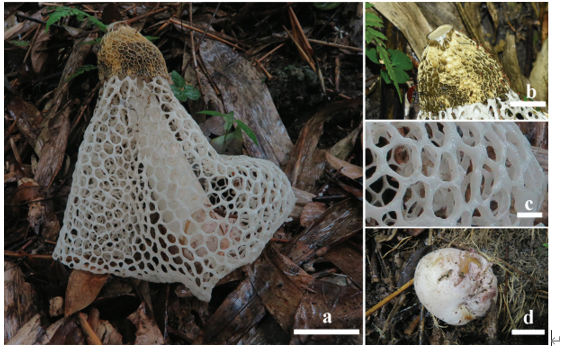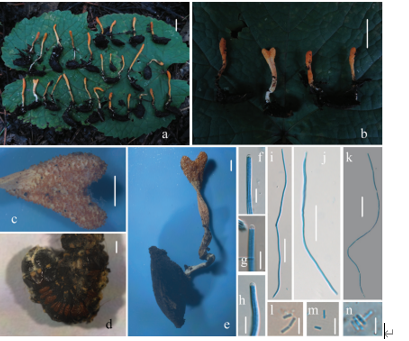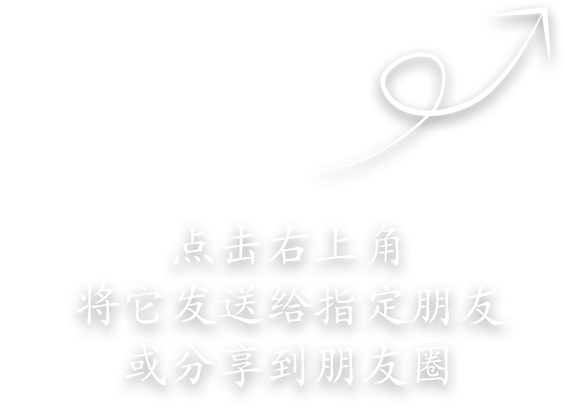Hypoxylon wujiangensis Y.H. Pi & Q.R. Li 2020
MycoBank number: MB 835782
Holotype: CHINA. Guizhou Province: Liping (26.123611°N, 109.075556°E), on dead wood, 15 August 2019, Q.R. Li, 2019LP10, (GMB0213, holotype; GACP QR1926, isotype). Ex-type living culture GMBC0213
Morphological description
Saprobic on the surface of dead wood. Sexual morph: Stromata effused-pulvinate, irregular, solitary, superficial, 2 mm wide and 3 mm high, surface convex-applanate, not smooth, covered in white pruina, brown vinaceous (84) or fuscous black (104), rough, highly carbonaceous including subglobose perithecia, papillary, with black dots on the surface. Perithecia subglobose, 500–700 μm diam., rarely obovoid tubular. Ostioles slightly depressed, umbilicate. Dull yellowish brown granules immediately beneath the surface and between perithecia, yielding sienna (8) pigments in 10% KOH; tissue below the perithecial layer dark brown to back. Asci 180–265 × 6–13 μm (mean = 213 × 9 μm, n=30), 8-spored, unitunicate, cylindrical-falcate, long-stipitate, spore-bearing parts 52–73 μm long, stipes 135–195 μm long, with apical ring bluing in Melzer’s iodine reagent, discoid, 1.5–2 μm high × 2.5–3 μm broad. Ascospores 8.5–10 × 4.5–6 μm (mean = 9.5 × 5.5 μm, n=30), brown to dark brown, unicellular, ellipsoid or slightly inequilateral, with narrowly rounded ends, epispore smooth, with a straight or slightly sigmoid germ slit nearly spore-length, lacking sheath and appendages. Asexual morph: Undetermined.
Habitat: dead wood
Distribution: Guizhou Province, China.
GenBank Accession: ITS MT568856; LSU MT568855; RPB2 MT585803; β-tubulin MT572481
Reference: Pi YH, Zhang X, Liu LL et al. (2020) Contributions to species of Xylariales in China—4. Hypoxylon wujiangensis sp. nov. Phytotaxa 455 : 021-030. https://doi.org/10.11646/phytotaxa.455.1.3
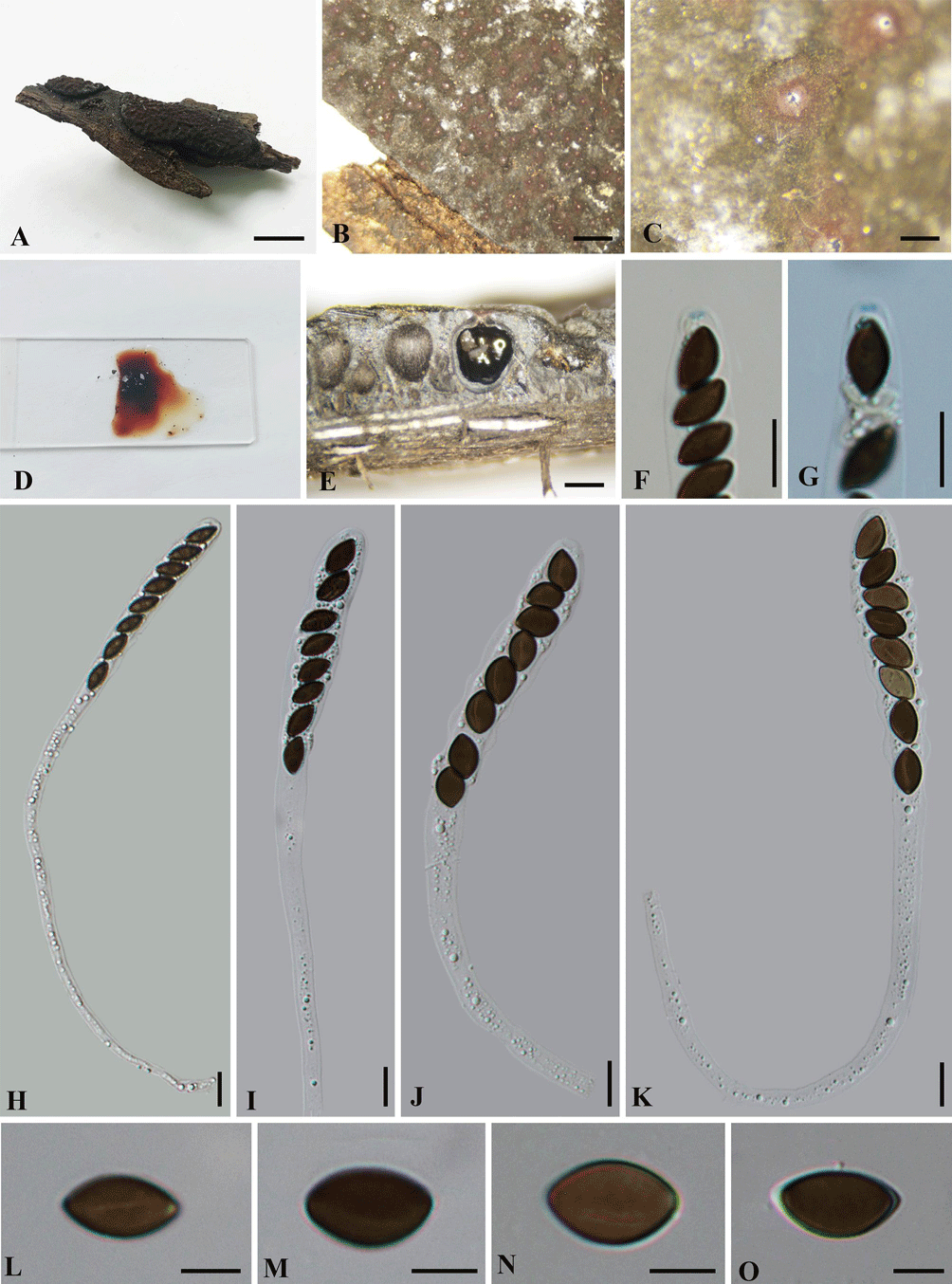
Hypoxylon wujiangensis (GMB0213, holotype). A. Material. B–C. Stromata on the surface of host. D. Pigments in KOH. E. Section of stroma. F, G. Ascus apical apparatus (stained in Melzer’s reagent). H–K. Asci with ascospores. L–O. Ascospores. Scale bars: A = 1 cm, B = 500 μm, C = 200 μm, E = 300 μm, F–K = 10 μm, L–O = 5 μm.


